Article by: Donbas Frontliner, for RFE/RL
Have you ever wondered what it’s like to live, work, and fight along the Donbas frontline? All along the contact line, civilians work their fields, children go to school, locals gather to discuss current events. But, just a stone’s throw away Russian proxies mount their artillery systems, while Russian snipers crawl stealthily to their positions and take aim.
Krymske is a small village located in Hirsky Raion, war-torn Luhansk Oblast, very close to the demarcation line and the occupied city of Luhansk. At the height of the Russo-Ukrainian war (2014-2016), Krymske was almost completely destroyed. As more and more inhabitants began leaving their homes, the population decreased from 1662 persons to 510.
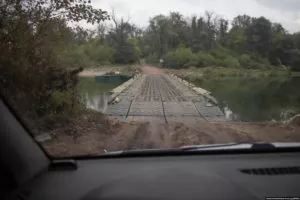
During the occupation period, the militants brutally persecuted locals who supported Ukraine’s independence. A local father and son were detained and tortured in a basement. 42-year-old Hennadiy Khytrenko, village deputy, retired police major, was shot dead by the terrorists near his home. He had repeatedly stated that Krymske was part of Ukraine.
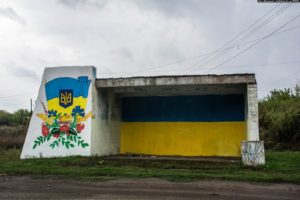
The village was liberated by Ukrainian fighters on October 20, 2014. Since then, it has been regularly shelled and attacked by Russian-led forces loyal to the so-called “Luhansk People’s Republic”. Four Ukrainian servicemen were killed and six others were wounded in a three -hour skirmish that started on August 23, 2018. On February 18, 2020, Russian-backed separatists launched an attack near Krymske, attempting to overrun an entrenched Ukrainian position, the first attack in two years. One Ukrainian soldier, was killed, four others wounded.
Bringing democracy to Shchastia, traumatized war-town with a happy name
Krymske residents are friendly and courteous. Svitlana, a local member of the Hirsky civil-military administration, says it is important to talk about the villages and towns located all along the contact line. She recalls that there used to be over 1,500 people in the village before the war, but adds sadly that more and more are dying and very few have returned. The 510 residents include 18 schoolchildren, 5 children attending kindergarten, and a few more infants. In the outpatient clinic, the doctor tells us that the last baby was born here about three years ago.
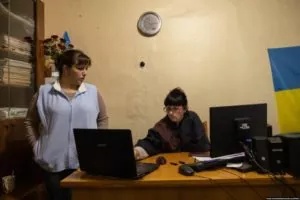
Myru (Peace) Street, which runs through the village, is a paradox against the backdrop of gunfire and shelling. A yellow school bus slaloms between the potholes as it takes the children to and from school.
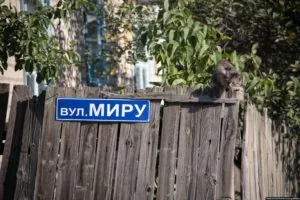
There are many different versions about the origin of the village name. One story - the name was thought up by Russian empress Catherine the Great; another - it was so named by Crimean Tatars who used to live here. Before becoming Krymske, the village was called Krymska Yama (Crimean Pit). On September 19, the village celebrated its 296th anniversary.
“Before our boys arrived, we were under this so-called “Great Don Cossacks Army” – that’s what they like to call themselves. We know who they are. They used to come into our home and shoot just because they heard someone say “Ukraine will be forever!” Our district police officer was killed that way. He knew very well who they were because he’d arrested and jailed some of them 15 years ago.” recalls Yulia, the artistic director of the Krymske Community Centre.
The officer was 42-year-old Hennadiy Khytrenko, a village council deputy and retired police major. He was killed by the Russian proxies on August 29, 2014, and was posthumously awarded the Order For Courage.
“Genya just couldn’t keep quiet. We all told him to calm down. OK, so he’s got a medal now, but I’d rather see him here, with us! Just two more weeks and he would’ve seen our boys arrive and liberate Krymske. The village was occupied in the summer and on October 19 our guys started arriving…” continues Yuliya.
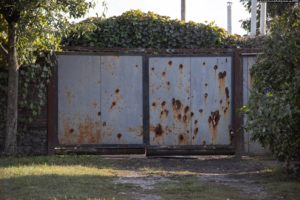
There are no people left in the village who openly support Russia. There are only those who are against the war, who want everything to return to normal. But is it possible?
“Thank God they’re gone. Today, you get up in the morning… and you’re in Ukraine! We can compare how it was then and how we live now. But, many are afraid they’ll come back. And many relatives have remained in the occupied territories – in Slovyanoserbsk, Luhansk, Stakhanov, Kirovsk… And we get horrifying stories from them… and it's scary! Because what they say on the radio and TV is one thing, and when your relatives call you and tell you how they really live, and you compare to how we live here…” says Yulia, the artistic director of the Krymske Community Centre.
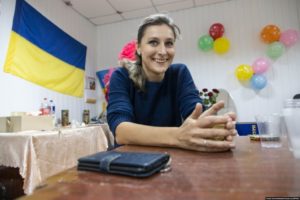
Eight long years of pressing problems
As in most villages, it is not easy to find jobs in Krymske. Such places as the local school, the outpatient clinic and two small farms offer more or less steady employment. There used to be a collective farm and three large herds of livestock, mainly cows, but today, only two farms and a small number of cows are left, complains Vitalina.
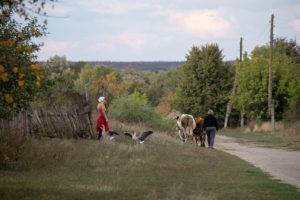
On the other hand, some local artists have taken matters into their hands and found an original way to earn their living. They creates plaster figures, such as animals, military equipment (tanks, Akatsiya self-propelled guns, Gvozdika howitzers, IFVs, combat patrol vehicles, etc.). The artists sell to the soldiers and volunteers and ship them to other cities in Ukraine.
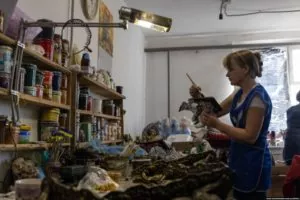
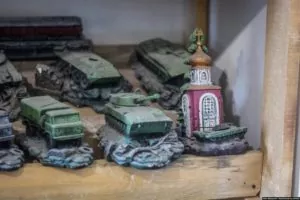
Krymske, like all frontline towns and villages, is contaminated by landmines; thousands of people continue living with this daily threat of losing their life or limbs. In addition, landmines deprive families and the community of land that can be used productively, such as agriculture. In 2016, two cows were killed by mine explosions. Demining teams sometimes work in the fields, but Krymske villagers, especially young children, are careful not to wander onto dangerous zones.
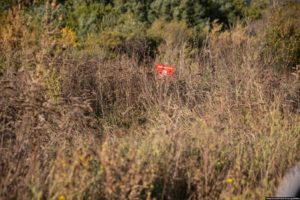
Water is another major problem. Water supply used to be centralized, but the pipe network was destroyed. The “other side” now controls daily water supply… Villagers have drilled wells, and the Red Cross helped finance wells for the civil-military administration and the out-patient clinic. Vitalina underlines that close to 40 households are currently without water; they must borrow water from their neighbours.
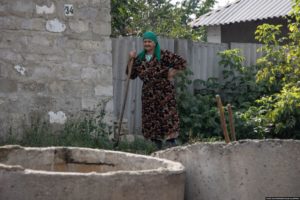
There are no ATMs and no post office in the village. Ukrposhta’s mobile service arrives in Krymske every Wednesday and Saturday so that locals can receive their pensions and pay for utilities.
In contrast, Krymske’s medical personnel is swamped with work. Covid and vaccination programs have increased their workload, adding to diseases and disorders that continue to grow with the ongoing war.
Valeriy Hrynenko, chief doctor of Krymske outpatient clinic, complains that, due to Covid-19 and the ongoing war, there are more and more patients to treat on a daily basis.
“We have a very high level of diabetes, patients with AIDS and alcohol-related illnesses, plus many cases of stress and nervous diseases, hypertension, tachycardia, neurasthenia… all kinds of phobias. We don’t normally treat the wounded, but the soldiers sometimes come here. We used to have a pharmacy, but it was transferred to another community. It’s difficult for everyone… We help as much as we can, but we have limited means.” says Hrynenko.
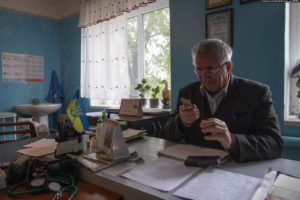
A brand new Nyva serves as an ambulance and sometimes as a public bus. There used to be no public transport, so the doctor allows the ambulance to transport four other passengers at a time. Daily worries also include tons of paperwork, certificates and letters to humanitarian organizations, prescriptions, diagnoses, disability applications, etc.
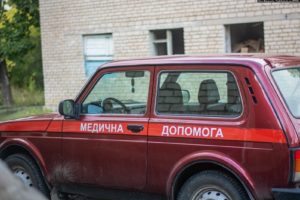
Valeriy Hrynenko admits that most of his family has remained in the occupied territories:
“Well, what can I say? I don’t agree with them. Ten years ago I said that there would be a war! People asked me why and I replied: “Just look at what happened in Transnistria, Abkhazia, Chechnya…” My wife is a psychiatrist “over there”… Our people over there have to work harder and think less about politics! They have no doctors; no one wants to work. I worked as chief doctor in a sanatorium for 24 years, 13 years as an emergency medic. Then, I came here…”
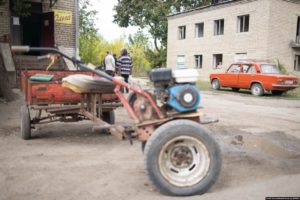
Krymske community centre
The community centre is the heart of cultural and social life in Krymske. It’s located opposite the bus stop, painted brightly in blue and yellow. Ukrainian flags flutter in the street. Near the club stands the monument to an unknown soldier and the mass grave of locals killed in World War II. Krymske used to have a church, but it was destroyed by the communist regime and all the priests were executed.

The community centre is run by Yulia, a psychologist and teacher from occupied Luhansk. Her husband Zhenya is the director and teacher at the local school. Yulia used to work at the school as a primary school teacher, but then decided it was more interesting to engage and motivate people in the arts.
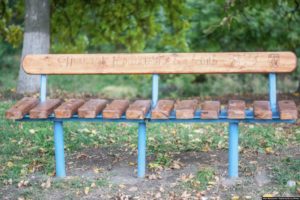
The walls of the centre are decorated with paintings and other works of art, all created by locals who come here for psychological assistance. The villagers also bring antiques and embroidery that will help Yulia create a future mini-museum. Among them is a reproduction of Repin’s famous painting The Cossacks writing a letter to the Turkish Sultan.
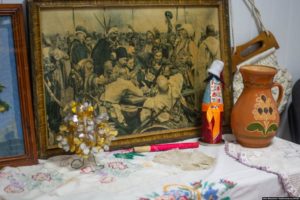
There aren’t many young people left in the village… only 18. They also visit the community centre to play billiards and table tennis. Yulia has even organized a children’s vocal group, because the children prefer to dance, sing and perform onstage when they are together.
The Ukrainian military and villagers have become more than neighbours. They get together and fraternize on national and local holidays, and assist each other when needed.
All the brigades stationed in or near the village donate flags to the club – the 24th
, 93rd, 14th… The director says that they will soon create a historical corner and display all the military flags.”
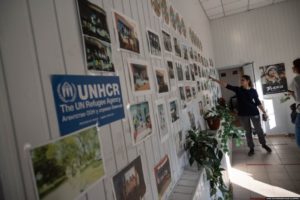
“We plan to present the history of our village; we’ll hang these flags on the wall and exhibit the essays that our children have written about the war. Their thoughts, their dreams… We created this stand together with a teacher of Ukrainian literature. She collected the children’s works, memoirs, poems… volunteers helped her to publish this book, and they also built this stand. I admit that these stories are difficult and scary to read…” says Yulia.
Simple sketches decorate the walls, essays and drawings describing how the so-called “Don Cossacks” fled when the Ukrainian soldiers arrived, how locals organized daily life in basement shelters, the first shots and shelling, the smell of war.
The tension is building up
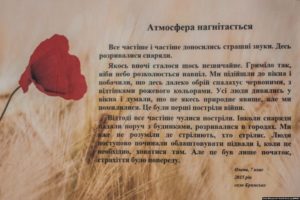
More and more strange sounds; shells exploding somewhere. Suddenly, there was a roll of thunder as if the sky was ready to split in half. We ran to the window and saw red and pink flashes of light somewhere in the distance. We thought it was a natural phenomenon, but we were wrong. These were the first sounds of war.
People had to move into basements. They arranged their living areas, brought blankets, warm clothes, documents, valuables; stocked up on water and food. People with small children brought toys so that the kids could play. Our household pets were also afraid of gunfire. They followed their masters closely, running after them and hiding in the corners. The war terrified everyone.
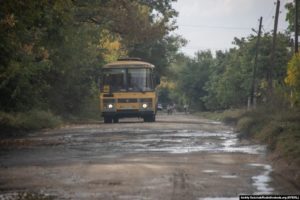
Reconstruction and renewal
Like children everywhere, Krymske kids just want to hang out and enjoy life. However, their reality is quite different, and they must attend theoretical training courses in landmine location, safety, first aid, etc. Volunteers also provide instructions on active measures during shelling and panic attacks to both both children and teachers.
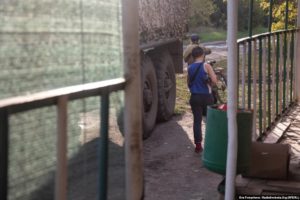
Villagers say that they are no longer afraid when they hear shelling or gunfire. Nevertheless, they are careful and have adopted the habit of carrying passports and hiding documents and valuables in their basements.
There are brand new metal-plastic windows all over the village. This looks especially strange on old, dilapidated houses. Red Cross volunteers work together with locals to repair windows and roofs that have been damaged by enemy shelling. In addition, volunteers help with heating systems, supplying briquettes and coal as many villagers have given up on gas. They also install stoves and solid fuel boilers.
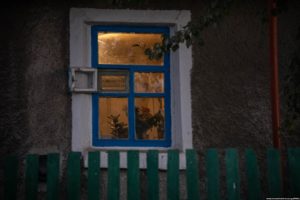
There is no heating in the community centre. Volunteers have promised to donate an energy-efficient space heater. After all, when the planting and gardening season is over, the villagers will want to gather and exchange news in a comfortable and warm place - the community centre.
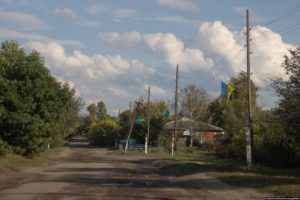
We have Ukraine in our hearts!
The King Danylo 24th
Separate Mechanized Brigade was the first to enter Krymske, followed by many others. According to Yulia, many soldiers have remained in the area. Oleksiy Babchenko, head of the Hirsky civil-military administration, served in the 93rd Brigade, which was also deployed in this zone.
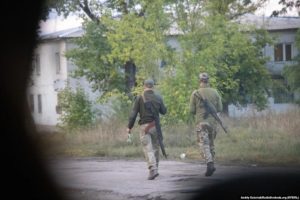
It’s strange, but thanks to the war and numerous volunteer initiatives, Krymske children and adults have been able to travel a lot in Ukraine.
“Volunteers and military chaplains have organized many trips for us. I can say that we know more about Ukraine than ordinary Ukrainians. We have Ukraine in our hearts. We’ve traveled a lot and our children have communicated with others. Nobody here will say a bad word about Ukraine. Abour the government – yes, but not about Ukraine.
In a way, it’s easier for us here, because we don’t talk about politics. We weren’t like that before; we never thought about such things. But now, our values have changed. I used to think more about material possessions; I wanted a large-screen plasma TV, but now it’s all different. We must live here and now!
You understand what I mean? If it weren’t for the war, we would never have met! Look, all these concerts and stars visiting our village! Who would have come to visit Krymske before?! We’ve met so many artists, so many interesting people! So many more Ukrainians know about Krymske nown!
The war has broadened my horizons. We’ve become stronger and much more detached from the material world. Our world is more spiritual; we are committed to our families, our time on earth, our freedom! Somehow everything has become different. In some strange way, even war has a positive side.” says Yulia.
Another gathering place is the Polyana convenience store. Next to it - a few tables and very poor Wi-Fi connection. Heavy military trucks and local Range Rovers standnearby. Children, pensioners and soldiers stroll in and out. Cats and dogs circle the tables, looking for scraps…
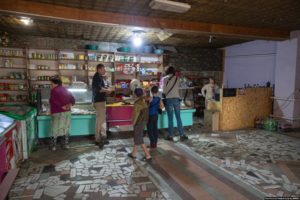
77-year-old Olha Mykolayivna complains bitterly about the rising prices and her utility bills.
“I use about 200-250 cubic metres of gas in winter because it’s very cold in my home. They sent me the bill, but what should I pay it with? I get only two thousand hryvnias per month? (approx. $71 US). We need to eat, we need medicine, and there’s still the electricity, bread… I have low blood pressure; I need chocolate…”
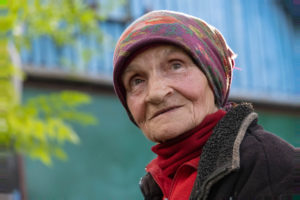
As the sun sets, a herd of cows returns lazily to the village. Nearby, sounds of explosions and shelling, intermittent gunfire, projectiles exploding. Neither the cowherd nor the cattle respond to the loud noise. The war is routine.
Krymske is one of many towns and villages on the frontline of the Russo-Ukrainian war. The people welcome visitors who have dared to travel on rutted dirt roads, mud, with distant sounds of war. Most communicate in a colourful surzhyk dialect. They are people who feel no fear, who know the price freedom.
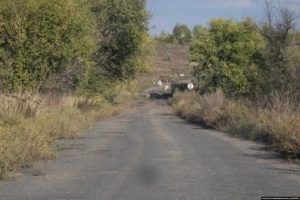
Donbas Frontliner, an independent interactive media project launched by three Ukrainian journalists – Olena Maksymenko, Eva Fomycheva, Andriy Dubchak – publishes frequent reports and on-site photos of life in the trenches and along the contact line, covering both the military conflict and the hybrid war launched by the Russian Federation against Ukraine. Frontliner reporters and their crew are physically present on the front lines 24 hours a day seven days a week.
Frontliner reporters bring us this live report from eastern Ukraine.

